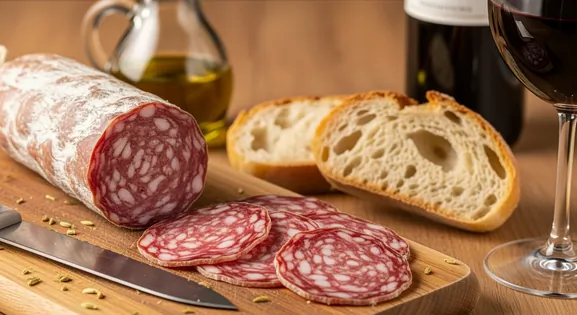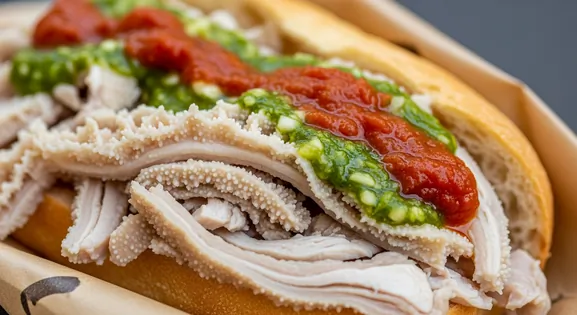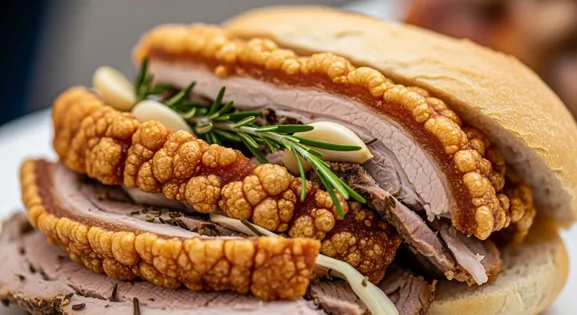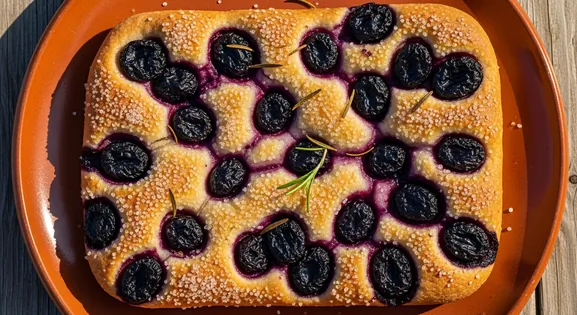Pappardelle al Cinghiale (Wild Boar Pasta) in Florence
Pappardelle al Cinghiale
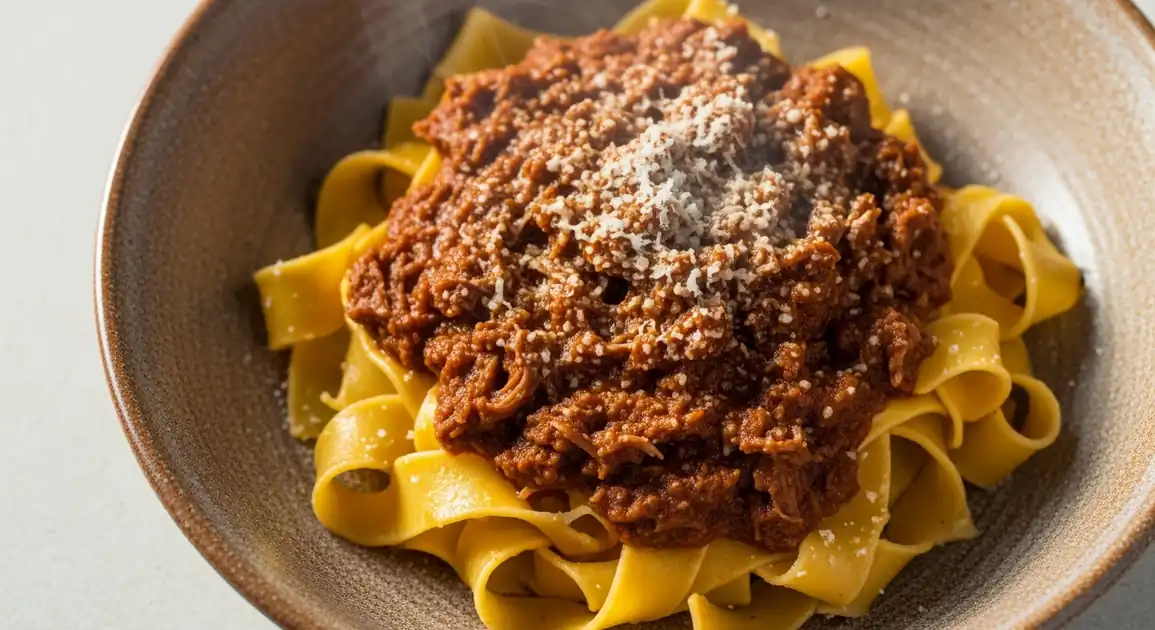
Pappardelle al Cinghiale (Wild Boar Pasta): A Local Culinary Staple
Stepping into a Florentine trattoria, the aroma of slow-cooked wild boar ragu promises a culinary journey. Pappardelle al Cinghiale is more than just pasta; it's a taste of Tuscany's rustic heart, a dish deeply rooted in local tradition and best savored right here in Florence.
New to Pappardelle al Cinghiale (Wild Boar Pasta)? Learn all about its history in our complete guide.
Key Tips for Enjoying This Dish
Seek out local 'sagre' (food festivals) in nearby towns like Greve in Chianti during fall for authentic, often cheaper, versions of the dish.
Always pair your Pappardelle al Cinghiale with a robust local red, like a Chianti Classico or Brunello di Montalcino, for the ultimate Tuscan experience.
Many Florentine trattorias pride themselves on homemade pasta. Ask if the pappardelle is 'fatta in casa' (made in-house) for superior texture and flavor.
Navigating the City for Great Pappardelle al Cinghiale (Wild Boar Pasta)
Oltrarno
The less touristy southern bank of the Arno river, especially Santo Spirito and San Frediano neighborhoods, home to authentic, family-run trattorie.
Piazza Santo Spirito, Piazza del Carmine, Via Maggio
Dinner (7:30 PM - 10 PM), Weekend Lunch (1 PM - 3 PM)
San Niccolò
A somewhat hidden neighborhood with excellent local restaurants serving traditional Tuscan cuisine.
Piazza San Niccolò, Via San Niccolò
Dinner (8 PM - 10 PM)
Sant'Ambrogio
An authentic neighborhood with an excellent market and surrounding traditional restaurants.
Mercato di Sant'Ambrogio, Piazza dei Ciompi
Lunch (12:30 PM - 2:30 PM), Dinner (7:30 PM - 10 PM)
Countryside Restaurants
Restaurants in the hills surrounding Florence often serve the most authentic versions, using truly local wild boar.
Fiesole, Settignano, Impruneta
Weekend Lunch (1 PM - 3 PM)
Vendor Tips
- Ask if they make their pasta in-house ('La pasta è fatta in casa?').
- Inquire about the source of their wild boar ('Da dove viene il cinghiale?').
- Check if they follow traditional marination with wine and juniper ('Marinate il cinghiale nel vino?').
- In Florence, a good sign is a restaurant that's been operating for generations ('storico' or 'dal [year]' in their name).
A Traveler's Checklist
What to Look For
-
Meat thoroughly cooked and tender
Wild boar requires long, slow cooking ('lunga cottura') to be safe and palatable. It should easily shred with a fork.
-
Pasta described as 'fatta in casa' (homemade)
Florentine trattorias pride themselves on fresh pasta. Look for the slightly irregular shape and rough texture of handmade pappardelle.
-
Served piping hot
Ensures the ragu and pasta are freshly combined and heated through.
What to avoid
-
Tough or chewy meat pieces
Indicates undercooking, which is a safety concern for game meat.
-
Excessively strong, 'off', or sour smell
While slightly gamey is normal, a pungent unpleasant odor suggests the boar meat may be spoiled.
-
Uniformly shaped pasta ribbons
Perfectly identical pappardelle might indicate dried, factory-made pasta rather than fresh, local 'pasta fresca'.
Know Before You Go
Dietary Information
Important Note for Travelers: Your safety is our priority. Below are the common allergens associated with the traditional preparation of this dish. However, recipes and ingredients can vary significantly between establishments. Always confirm all ingredients directly with the food vendor before ordering, especially if you have a severe allergy.
Potential Allergens
Dietary Suitability
Price Guide
Budget Tips
- Restaurants in the Oltrarno district often offer better value than those near the Duomo or Uffizi.
- The 'menu del giorno' (menu of the day) can include pappardelle dishes at better prices.
- Lunch prices average 15-18 EUR versus 18-25 EUR at dinner for the same dish.
- Small, family-run trattorie often provide better value than upscale ristoranti.
Serving & Seasonality
Served as a 'primo piatto' (first course) in a wide, shallow bowl to showcase the pasta. Typically garnished with a light grating of aged Pecorino Toscano cheese, never Parmigiano in traditional Florentine establishments.Best Times to Enjoy
- Lunch: Traditional Florentine lunch hour (1 PM - 3 PM) is perfect for pasta dishes.
- Dinner: Evening meals (8 PM - 10 PM) are when locals typically enjoy hearty pasta dishes.
- Fall and Winter: The dish is especially popular during colder months and wild boar hunting season.
Seasonal Availability
Available year-round in restaurants, but traditionally a fall and winter dish corresponding with wild boar hunting season (November-January).
How to Order with Confidence
When ordering Pappardelle al Cinghiale in Florence, remember it's a 'primo piatto' (first course), so don't be surprised by the portion size. Locals often enjoy it with a glass of Chianti. Don't ask for Parmigiano cheese; traditional Florentine establishments use Pecorino Toscano. If you're unsure, simply say 'Vorrei le pappardelle al cinghiale, per favore' and let the server guide you to a perfect meal.
How Locals Eat It: Variations
Pappardelle al Cinghiale del Chianti
Versions from the Chianti region surrounding Florence often feature wild boar marinated specifically in Chianti wine, sometimes with the addition of local herbs like nepitella (wild mint).
Pappardelle al Cinghiale dei Colli Fiorentini
Preparations from the Florentine hills sometimes incorporate local olive oil pressed from the surrounding groves, adding a distinctive peppery finish.
Pappardelle al Cinghiale con Crostini
A presentation style in some traditional Florentine restaurants where the pasta is served alongside small crostini topped with a chicken liver pâté, offering contrasting flavors.
Pappardelle Strette al Cinghiale
Some historic Florentine establishments serve a narrower version of pappardelle (closer to fettuccine width) claiming this is the more traditional Florentine proportion.
A Cultural Deep Dive
Local Significance
In Florence, this dish represents the perfect marriage of the city's sophisticated culinary tradition with the rustic hunting culture of the surrounding Tuscan countryside.
Eating Customs
- Florentines typically eat this as a first course ('primo piatto'), followed by a second course of meat or contorni (vegetable sides).
- It's traditional to pair it with local Chianti Classico or other Tuscan red wines.
- Always eaten with a fork only, twirling the wide noodles rather than cutting them.
Practical Guides for Enjoying Pappardelle al Cinghiale (Wild Boar Pasta)
Finding Authentic Pappardelle al Cinghiale in Florence
Tips for locating a traditional and delicious wild boar pasta dish in Florence.
- Venture slightly off the main tourist paths: Explore Oltrarno district or trattorias away from the Duomo for more authentic finds.
- Look for 'Trattoria Toscana' or places emphasizing 'Cucina Tipica Fiorentina'.
- Check the menu for 'Pappardelle al Cinghiale' and ideally 'pasta fresca' or 'fatta in casa'.
- Observe the dish if possible: Look for wide, rough-textured pasta coated in a rich, dark ragu with shredded meat.
- Ask if the 'cinghiale' is local ('locale' or 'toscano') for a truly regional experience.
Navigating Florentine Menus for Wild Boar
Learn how to identify authentic Pappardelle al Cinghiale and other Tuscan specialties on local menus.
- Look for 'cinghiale' (wild boar) and 'pappardelle' under the 'Primi Piatti' section.
- Be aware that some menus might list 'ragù di cinghiale' which is the sauce, and you'd then choose your pasta.
- Don't hesitate to ask your server for recommendations or clarifications on ingredients.
- If you see 'pasta fresca' (fresh pasta) mentioned, it's a good sign of quality.
Our Commitment to Quality
At Tasteplorers, our mission is to provide the most accurate and useful travel information in the world. To achieve this, all content on this site is created through our unique editorial framework. We utilize leading AI research tools, guided by our proprietary prompts, and a multi-stage validation process. This entire system is overseen by our editorial team to ensure everything we publish meets our high standards for accuracy, cultural nuance, and practical value for travelers.
Learn more about our Editorial Process and our Mission.
Countries
Explore regions
Europe
Discover Europe's diverse culinary landscape, from Mediterranean flavors to hearty Alpine fare. Learn to navigate markets, decode menus, and eat like a local.
Latin America & Caribbean
Discover the vibrant cuisines of Latin America & the Caribbean. Our expert guide covers everything from Mexican street food to Peruvian ceviche and market tips.
Oceania
Explore Oceania's diverse food scene. Learn about Polynesian earth ovens, Fijian feasts, and the vibrant café culture of Australia and New Zealand.
Southeast Asia
Explore Southeast Asia's diverse food cultures from Thailand to Vietnam. Get expert tips on navigating spice levels, choosing quality vendors, and understanding the rich traditions of the region.
